Ping Wang
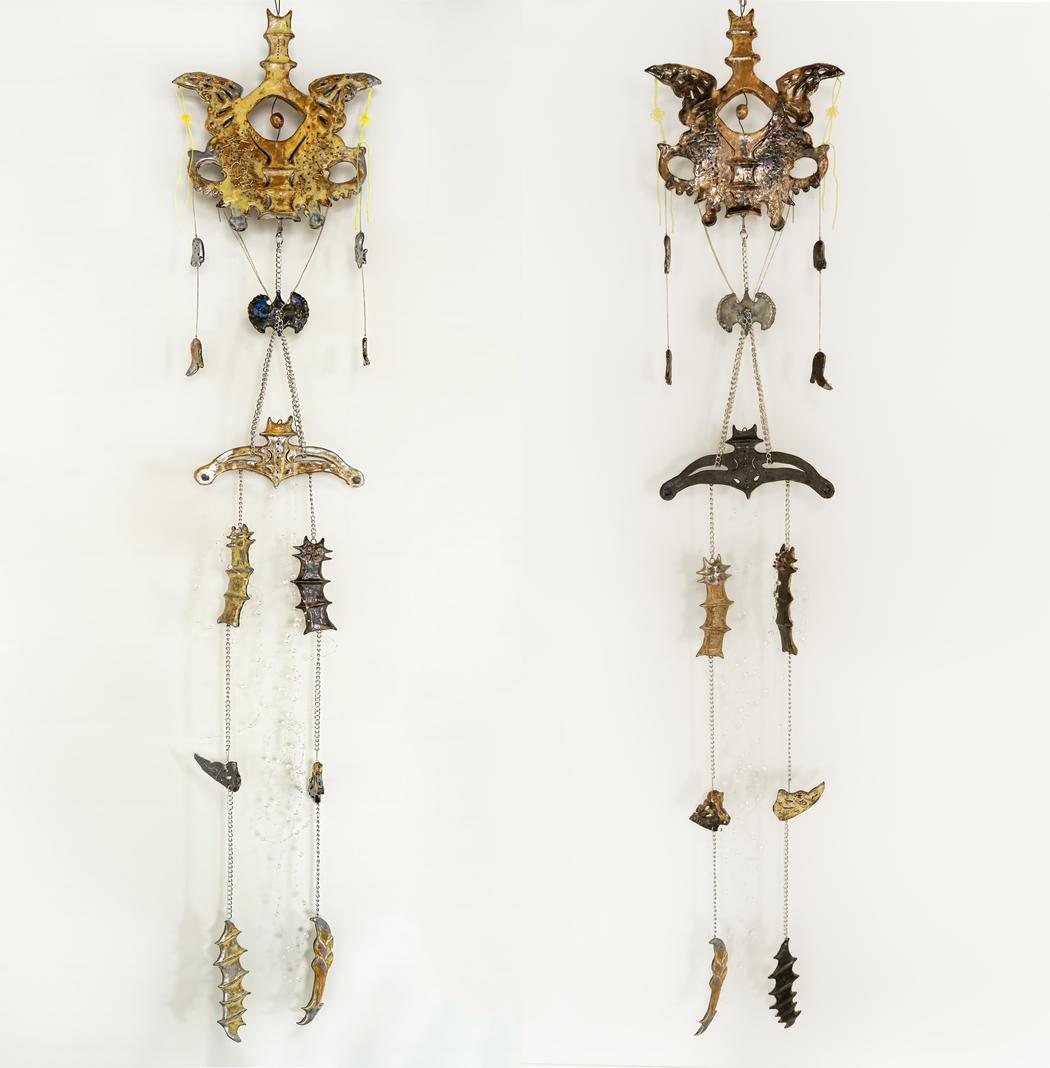 Ping Wang | Axis Of The Body
Ping Wang | Axis Of The Body
Your work bridges traditional ceramics with interactive technology. What first inspired you to merge these mediums?
The shift began during my exhibition Meant to Held at Powerhouse Arts, where I presented Subliminal Echoes—a sculptural installation combining visceral ceramic forms with light and sound. The project explored liminal states between emotional landscapes and physical space, with each form acting as a portal that responded to memory, trauma, and cultural fragmentation. For the first time, I integrated interactive elements—subtle motion, responsive lighting, and sound—which not only deepened viewer engagement but also marked a turning point in my practice: a growing curiosity about how technology could amplify the emotional and sensory dimensions of traditional craft.
That curiosity deepened during my residency at Pioneer Works, where I developed the Interdependent Frequencies series—a continuation of this investigation into sensory perception, interactivity, and material resonance. This immersive installation explores the exchange between sound, motion, light, and sculptural form as a metaphor for the interdependence of body and soul. Composed of reassembled ceramic limbs, the work responds to viewer presence with sound and movement, activating an original audio composition blending bass, guzheng, and transformed everyday samples. Both bodily and mechanical, it reflects on thresholds—between motion and stillness, body and environment, sensation and perception.
Working across both institutions helped me see that technology could be more than a tool—it could become an extension of the medium, a way to give it breath, presence, and voice.
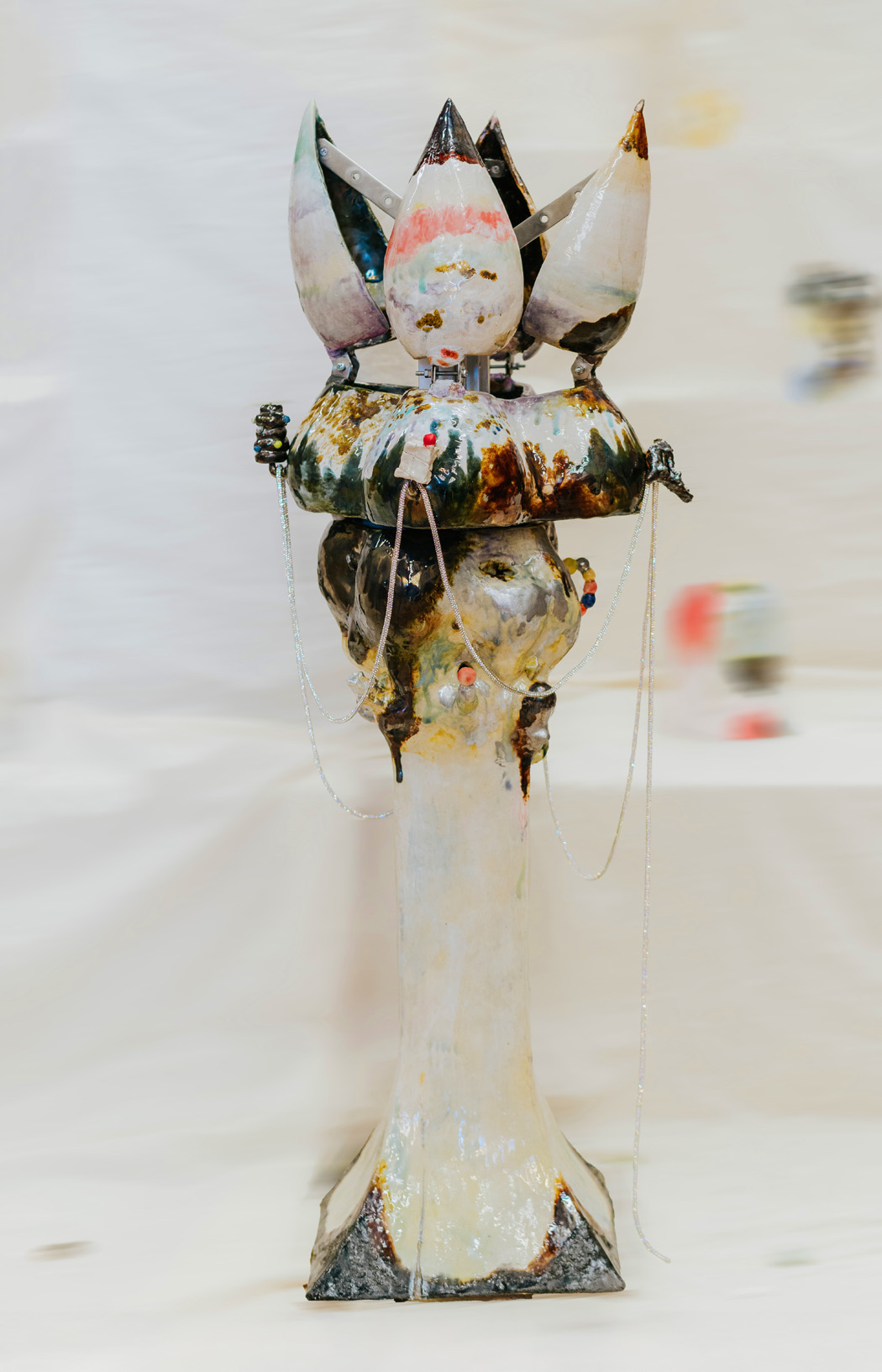 Ping Wang | Echoes
Ping Wang | Echoes
What are the challenges and rewards of working across so many mediums—ceramics, sculpture, painting, digital media?
The biggest challenge is that each medium has its own temperament, language, and limitations—but I’m naturally a patient person who enjoys digging deep into a process. This instinct started since middle school, I’ve made a birthday card for my mother every year, but it was never just a flat card. Over time, they evolved from paper cutouts to layered reliefs to small three-dimensional objects, as I instinctively used whatever materials I had to bring an image in my mind into physical form. That habit of working fluidly across materials became the foundation for my multidisciplinary practice.
I started with painting and drawing, then moved into printmaking, which shaped how I think in layers, repetition, and composition. Ceramics demands patience and a willingness to embrace unpredictability; sculpture requires structural problem-solving; painting is often more immediate and intuitive; and digital media asks for precision and an entirely different kind of logic. Moving between them means constantly shifting my mindset and technical approach.
In return, I’ve gained a sense of freedom. Working across mediums allows me to choose the form that best serves the concept rather than forcing an idea into a single discipline. Ceramics has grounded me in material tactility, while digital media has opened up possibilities for interactivity, sound, and light. Together, these approaches allow me to create immersive environments where traditional craft and technology coexist—spaces that can be both intimate and expansive, tactile and ephemeral.
How did growing up in China and moving to New York influence your exploration of cultural identity in your art?
Growing up in China, I was surrounded by Eastern aesthetics, language systems, and implicit cultural codes—often embedded in everyday materials, gestures, and rituals. My mother, a Chinese ink painter and collector of traditional furniture, filled our home with objects whose visual language had evolved over thousands of years. Lived with, touched, and internalized, they became part of my sensory memory.
After moving to New York, I found myself navigating a space where many of those references felt untranslatable or fragmented—yet there were also moments of connection. I carried an emotional rawness before I had the language to articulate these shifts. In my early printmaking, I began to subconsciously express that in-between state: starting with New York’s iconic architecture, framing compositions with thin lines like portals, and inserting fragmented limbs that reached in or out of the frame.
My practice lives in this in-betweenness. I often deconstruct the body, along with cultural symbols such as calligraphy characters, and repurpose forms from traditional furniture, architecture, or fashion. These elements are interwoven with symbols tied to diasporic experience, creating a negotiation between systems—visual, linguistic, spatial. I’m not simply placing one culture into another; I’m working within the crevice where identities fracture, overlap, and evolve. This liminal space isn’t just something I reflect on—it’s where my work begins.
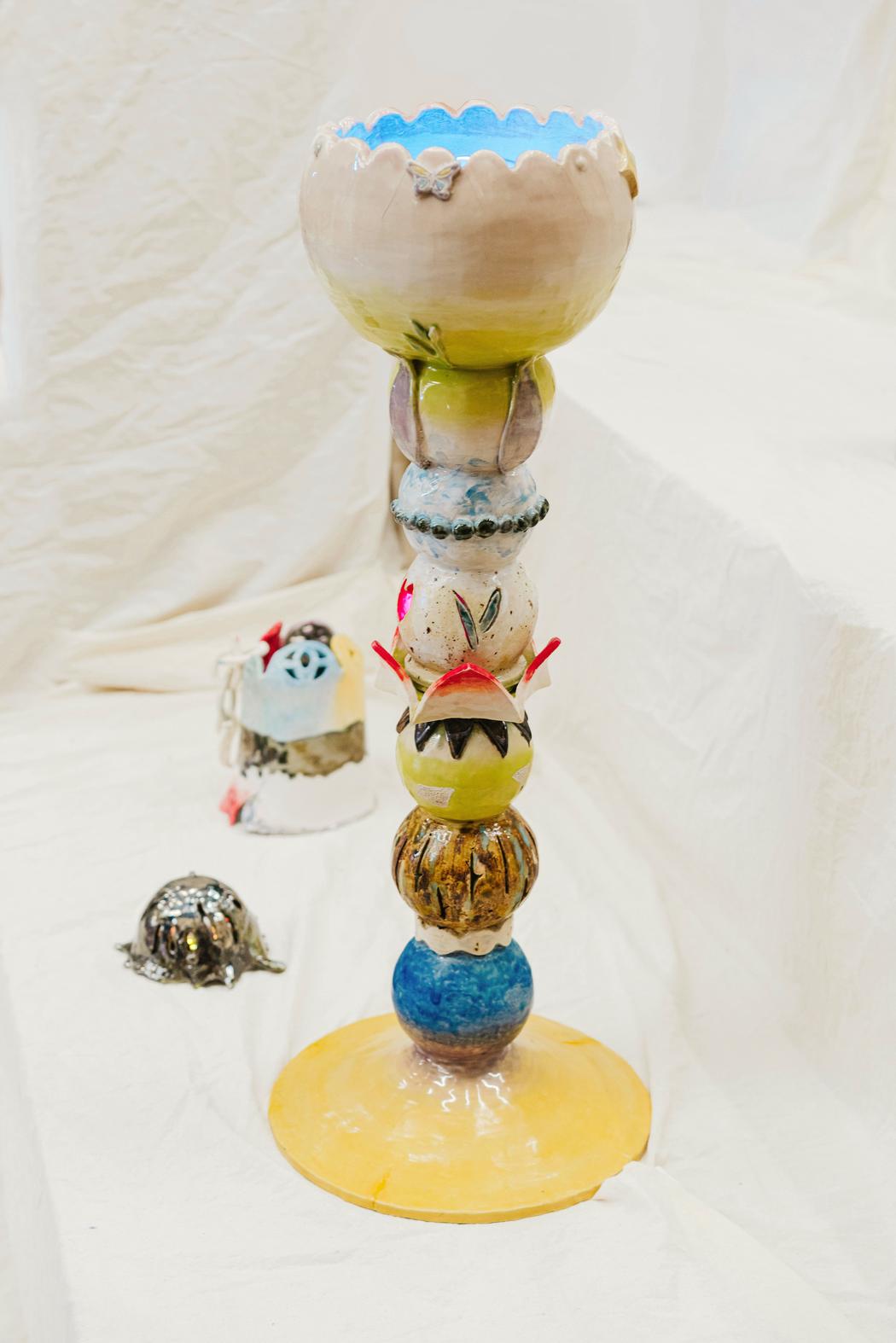 Ping Wang | Echoes
Ping Wang | Echoes
You often reference the human body in distorted or symbolic forms. What role does the body play in your storytelling?
The body, in my work, is both a site and a symbol—a vessel that carries memory, trauma, resilience, and transformation. I rarely depict it in full or in strict anatomical accuracy. Instead, I focus on fragments—legs, joints, hybrid limbs—often distorted or reassembled to convey psychological states. These forms act as stand-ins for lived experiences: instability, longing, rupture, and survival.
In recent works, like the Interdependent Frequency series, I’ve been particularly drawn to the leg, as it implies motion, direction, or collapse. A broken or mutated limb can suggest disorientation, but also adaptation. Many of my ceramic pieces appear vulnerable—off-balance, cracked, exposed—yet they hold weight. They endure. In that way, the body becomes a metaphor for navigating in-between spaces, especially in the context of migration, womanhood, and cultural dislocation. It is not just a body—it’s a landscape, a memory container, a political structure.
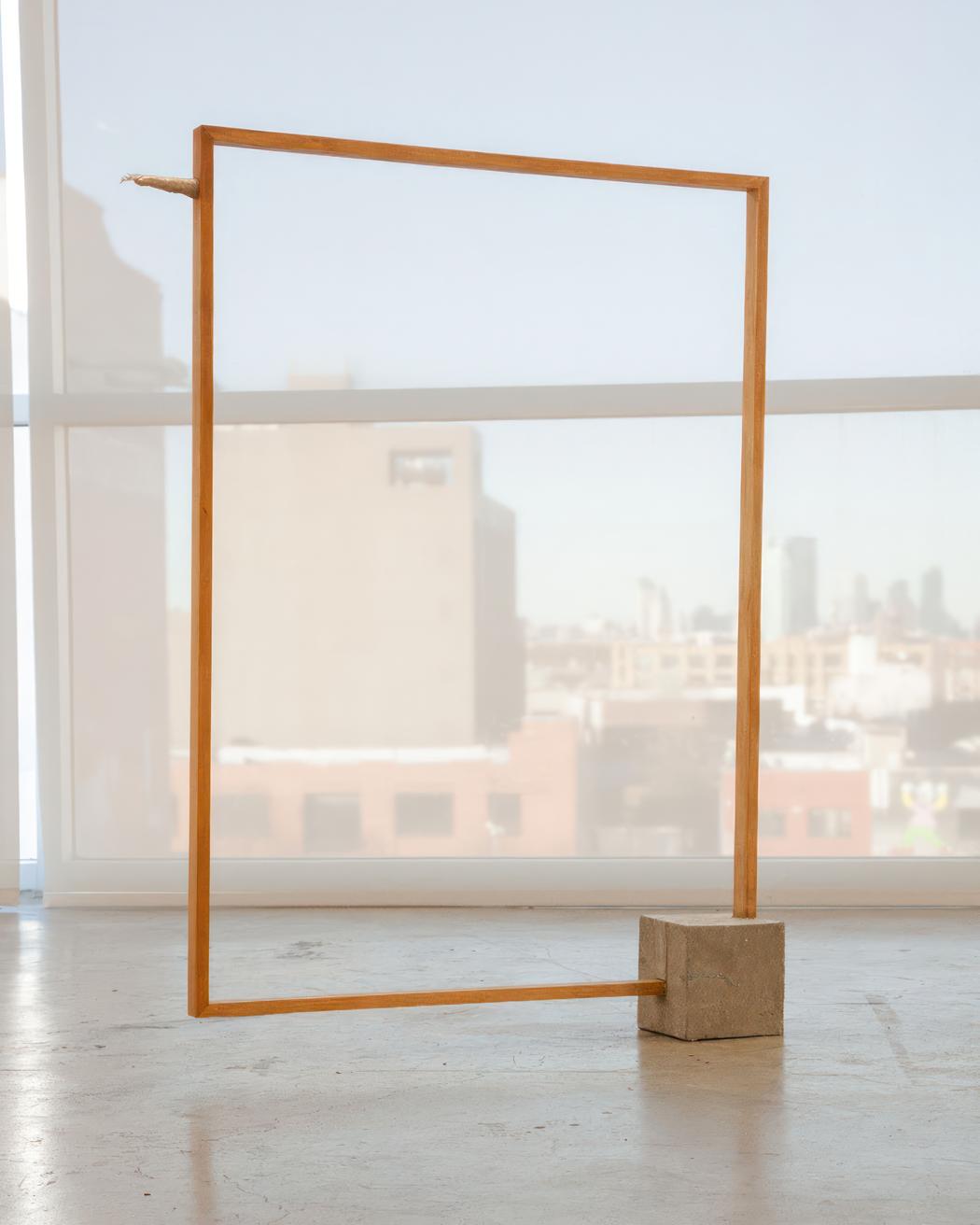 Ping Wang | Equilibrium
Ping Wang | Equilibrium
How do memory and trauma manifest in your visual language?
For me, it’s less about depicting specific events and more about translating emotional states into form, color, and gesture. Often, I work unconsciously—deconstructing, distorting, reshaping—until the material begins to echo the inner state. These states manifest as repetition, rupture, and residue—visual traces that suggest something has shifted, fractured, or been reassembled.
In ceramics, this might appear as cracks, uneven glazes, or surfaces that seem eroded by time. In installations, it can take the form of unstable structures, tangled threads, or sound that interrupts and fades like a fleeting recollection. I see memory as fluid—constantly reshaped by the present—while trauma often leaves a sharper, more persistent imprint. This duality shapes my visual language: distortion to convey instability, layering to mimic the weight of accumulated experience, and fragmentation to reflect what is lost or altered in translation. Through these strategies, the work inhabits a space between preservation and transformation, where both memory and trauma can be felt rather than explained.
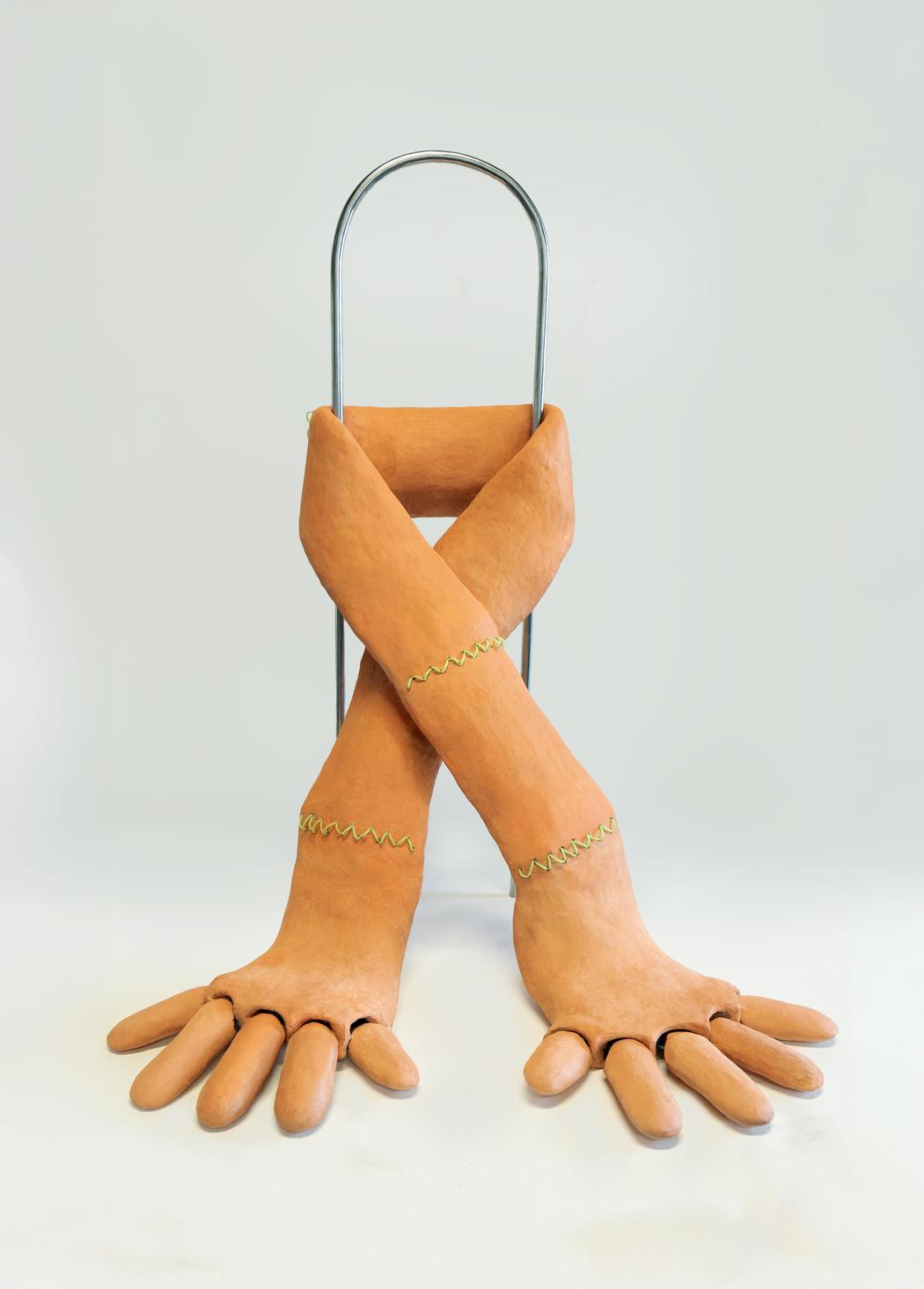 Ping Wang | Motherhood | 2025
Ping Wang | Motherhood | 2025
Your works feel both fragile and resilient. Is this duality intentional?
Yes and no. The unconscious and the intentional coexist in my practice. I rely on the unconscious—shaped by a heightened sensitivity to my surroundings—yet many of these unconscious choices are later distilled into intentional decisions. I enjoy working within this ambivalence, much like my natural affinity for ceramics—its visceral presence, the way it can hold both softness and hardness in the same state.
For me, “fragile” and “resilient” are not complete opposites. This coexistence gives my work dimensionality. Fragility feels like the psychological state of our time—sensitive, exposed, constantly adapting—while resilience is something deeply rooted, especially in women, like a strength embedded in the bones. By embedding these qualities into different materials, and allowing them to collide and interact, I can open new conversations through form, color, and texture.
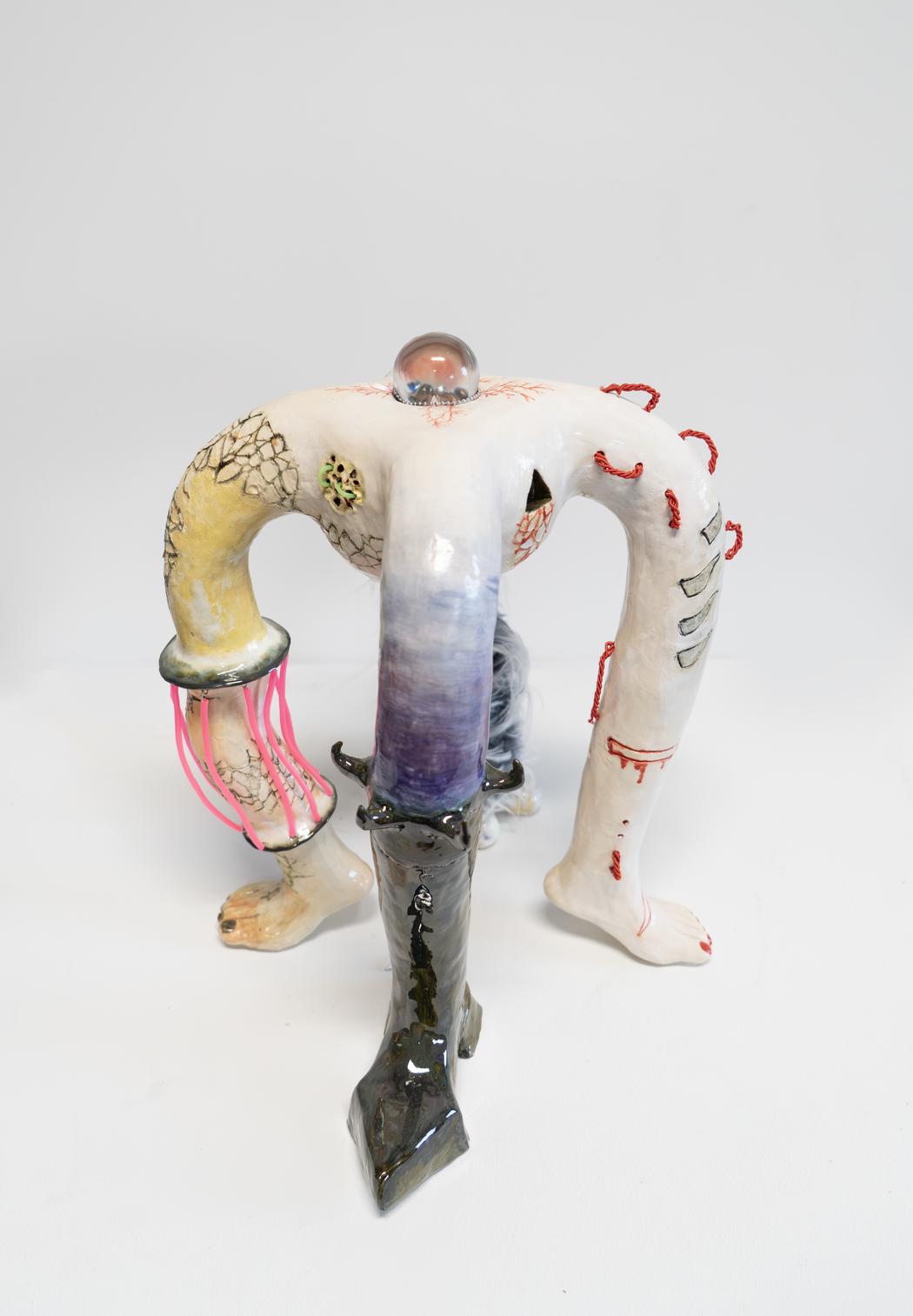 Ping Wang | Threshold Limb | 2025
Ping Wang | Threshold Limb | 2025
Do you consider your art feminist in nature? If so, how do you express that through material and form?
My starting point is womanhood, and from there I explore identity and gender as fluid, shifting spaces. In my work, I reconstruct power dynamics to confront interwoven themes of resilience and transformation. I’m drawn to how the body is altered, staged, or adorned—through fingernails, high heels, piercings, and other elements of fashion and decoration. These objects can be sites of empowerment and self-expression, yet they also carry histories of expectation and control.
I often exaggerate or reconfigure these forms: using only the shape and arrangement of nails without showing the entire hand, transforming a high heel or a human leg into the leg of a piece of furniture, or giving a glossy surface an unexpected weight. By shifting scale, material, and function, I challenge the neat boundaries of “feminine” and “ornamental,” opening them to conversations about strength, desire, and artifice.
These gestures are not about fixing identity in place, but about keeping it open—allowing resilience and vulnerability, performance and authenticity, to coexist. In this way, my feminism is less a declaration than a practice: using form, texture, and space to hold the complexity of how we inhabit our bodies. It’s about creating space for the body to be many things at once.

Leave a Reply